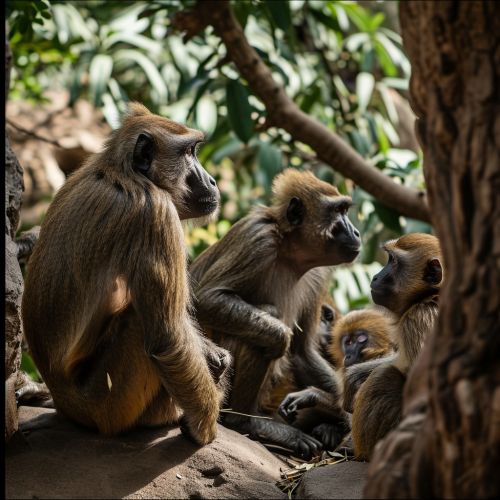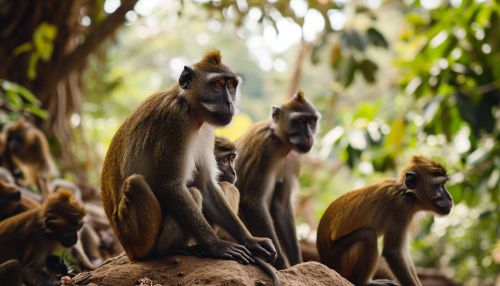Primate Behavior
Introduction
Primate behavior refers to the range of actions and interactions exhibited by primates, a group of mammals that includes humans, apes, monkeys, and prosimians. The study of primate behavior is a significant aspect of primatology, a scientific discipline that investigates the biological and social aspects of primates. This article will explore various aspects of primate behavior, including social structure, communication, mating, and parenting behaviors, as well as the cognitive abilities of primates.


Social Structure
Primates exhibit a wide variety of social structures, ranging from solitary to complex multi-male, multi-female groups. The social structure of a primate species is influenced by various factors, including ecological conditions, predation pressure, and the availability of resources.
Solitary Primates
Some primates, such as the orangutan, are primarily solitary, interacting with others only for mating or when mothers are caring for their young. Solitary primates typically have large home ranges and spend a significant portion of their time foraging for food.
Pair-Bonded Primates
In contrast, some primate species form monogamous pair bonds, such as the gibbon species. These primates live in small family groups consisting of a mated pair and their offspring. Pair-bonded primates often exhibit high levels of parental care and cooperation in raising offspring.
Group-Living Primates
Many primates, including most monkeys and apes, live in social groups. These groups can range from small family units to large communities consisting of multiple families. Group living provides several advantages, including increased protection from predators, shared responsibility in raising offspring, and increased opportunities for social learning.
Communication
Communication is a crucial aspect of primate behavior, allowing individuals to coordinate activities, establish social bonds, and convey information about food, threats, and mating opportunities. Primates communicate through a variety of channels, including vocalizations, facial expressions, body postures, and tactile signals.
Vocalizations
Primates use a wide range of vocalizations to communicate. For example, the howler monkey is known for its loud calls, which can be heard up to 5 kilometers away. These calls serve to communicate the group's location and status to other groups.
Nonverbal Communication
In addition to vocalizations, primates use a variety of nonverbal signals to communicate. These include facial expressions, body postures, and gestures. For example, the chimpanzee uses a variety of facial expressions and gestures to communicate its emotional state and intentions to other members of its group.
Tactile Communication
Tactile communication, such as grooming and touching, plays a crucial role in primate social interactions. Grooming, in particular, is a significant social activity among primates, serving not only to clean and maintain the fur but also to strengthen social bonds and establish social hierarchies.
Mating and Parenting
The mating systems and parenting behaviors of primates are diverse and complex, reflecting the wide range of ecological and social conditions in which these animals live.
Mating Systems
Primate mating systems range from monogamy, as seen in gibbons, to polygyny, where one male mates with multiple females, as seen in gorillas, to multi-male, multi-female groups, as seen in chimpanzees and bonobos.
Parenting
Parental care in primates is primarily provided by the mother, who carries, nurses, and protects the offspring. However, in some species, males and other group members also participate in caring for the young. For example, in marmosets, males often carry and groom the infants.
Cognitive Abilities
Primates are known for their high cognitive abilities, including problem-solving, tool use, and social learning. These abilities are linked to the complex social interactions and diverse ecological challenges faced by these animals.
Problem-Solving and Tool Use
Primates are known for their ability to solve complex problems and use tools. For example, chimpanzees have been observed using sticks to extract termites from their mounds, and capuchin monkeys use stones to crack open hard-shelled fruits.
Social Learning
Social learning, the process by which individuals learn from observing others, is a significant aspect of primate behavior. Through social learning, young primates learn essential skills and behaviors from their mothers and other group members.
